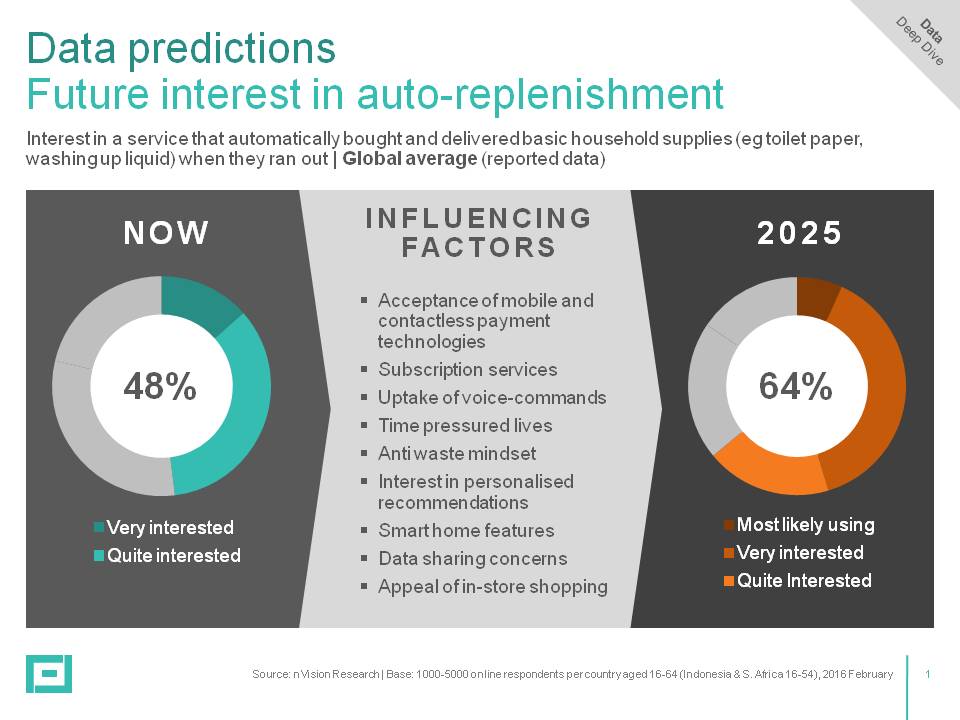The landscape of supermarkets is threatened. Its predators are e-commerce and on-demand services accessible through mobile devices but household tech is also advancing. And larger shifts in society, such as millennial living, are upending the industry’s position in consumers’ lives. From our webinar on the Future of Supermarkets we identified three key areas of disruption:
Responsive shopping
Our trend Cult of Immediacy reports on the desire for convenience and flexibility. While these are categories that all food retail companies are aware of and are speaking to, consumers aren’t content. They’re seeking out new, efficient ways to access goods and services. Cue trials for rapid delivery systems that give consumers greater control through convenient delivery times or a wider scope of potential delivery locations: home delivery, curbside or in-store pickup. In 2016, we saw innovations such as Starship Technologies in the UK with their delivery bots and, before that, Singapore Post’s experiment with drone delivery. So now that we know this is a “thing,” what’s next?
Innovative Physical Spaces
We can look to Amazon’s new store concept, Just Walk Out – a shopping service for Amazon Go customers in Seattle. Customers scan into the store using their Amazon app, which detects the products they take from the shelves. The goods are placed in a virtual cart and, as customers leave, they’re automatically charged for their purchases.
The concept is designed for the broad base of consumers already seeking seamlessness between their online and offline shopping experiences. Omnichannel is becoming the new norm, and close to 40% of purchases made by US shoppers combine online and in-store touch points on the path-to-purchase. Supermarkets that are able to adapt to the demands of an ever-hungry customer will be positioning well for the future. A good example of this comes from South Korea, where the Lotte department store and SK Telecom partnered to create a virtual and physical experience. Customers can shop at the food hall using a bar-code scanner and screens in-store to adjust their orders. The scanners vibrate to let shoppers know they are in close proximity of deals and offers, which are personalized from their purchase history. Through self-checkout kiosks, shoppers can specify a delivery date and time for the goods to be added to their virtual carts. Refrigerated lockers allow them to safely store their groceries as they shop in other parts of the store.
We can see that food retail spaces are responding to consumers’ search for the best overall experience when shopping. Although certain countries and demographics are more receptive to such technological advances in supermarkets, most outlets can benefit from upping their levels of convenience and customization to put shoppers first.
Invisible Commerce
Within the home, nascent auto-replenishment services offer the potential to remove mundane decision making from the consumer journey. The social contract here starts with the customer placing their trust in the service to make purchases for them, leading to a Branding Bypass. Foresight Factory found that the traditional core group of grocery shoppers, those in a household family stage of life, are 20% more likely than average to use auto-replenishment services with voice command options.
Particularly for brands in household supplies, grocery or personal care, seamless product replenishment appeals over decision making. The future of household retail here is to ensure that you’re the brand that never runs out by securing repeat business. How to achieve this? For grocery and household brands, displaying reliable and consistent delivery, as well as value for money, is a way to earn the status of the default brand.
What do you think about the topics we raised in this article? Tweet us at @futurethoughts